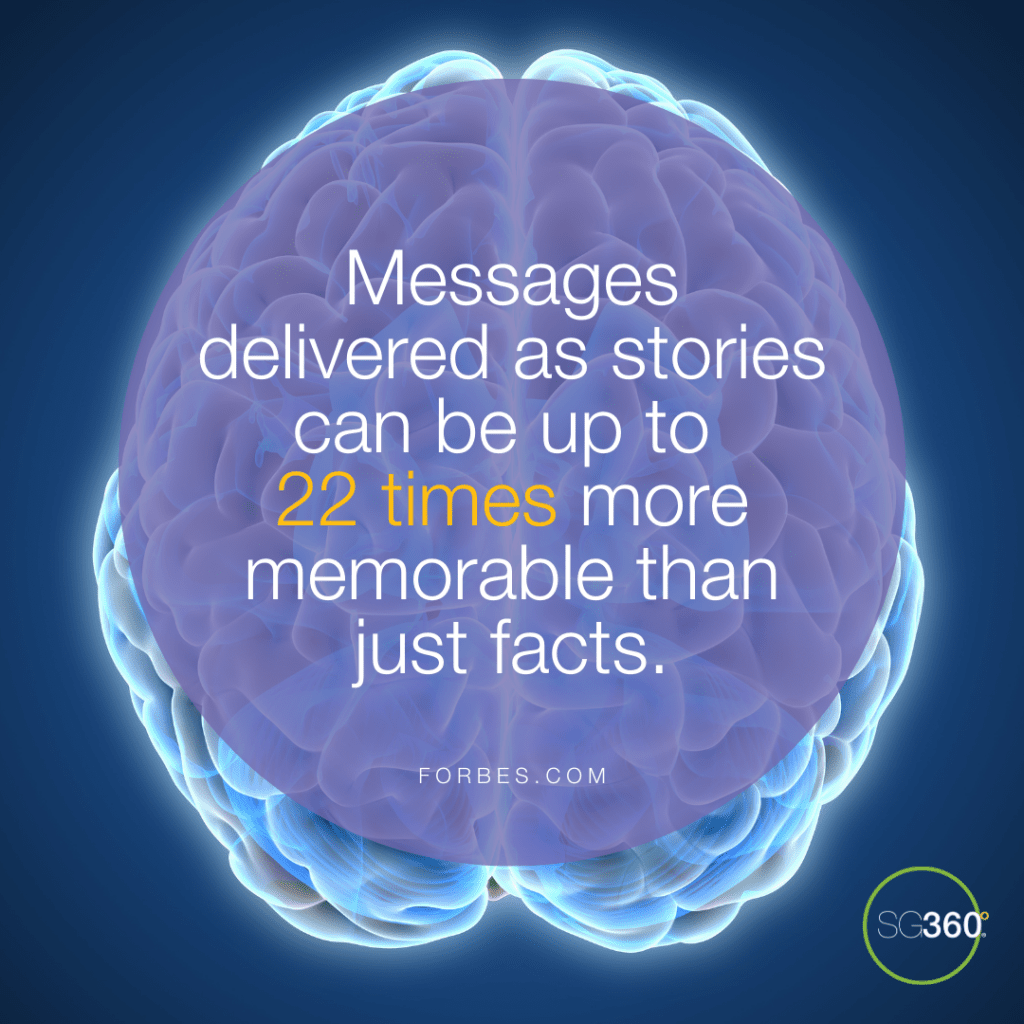Marketing is no longer about the stuff that you make, but about the stories that you tell.
In the pandemic, as consumers increasingly crave authenticity and meaning from brands, these words from Seth Godin couldn’t hold truer. People buy from, and donate to, organizations they feel connected to, making establishing an emotional connection with your audience critical to your brand’s success. The most successful brands know the value of storytelling and make it the core of their strategy to create that connection.
It’s all about emotion
A good story isn’t just entertaining; our brains are hardwired to respond to it. Research shows the brain activity in the sensory cortex that results from an emotional response to a story lasts for several days. Further, studies continue to show that memory and comprehension are better with something read on paper versus on a screen. When storytelling on paper is integrated into your marketing strategy, response rates increase, causing a lift in return on investment.
Why storytelling
Marketers have been hearing the importance of storytelling for quite some time, and for good reason. When we connect with a story, we experience a physical emotion… that can drive our behavior. The most powerful way to breathe life into your brand is to give your offerings an identity.
Why direct mail
Like storytelling, direct mail creates an experience that triggers emotion and action. In fact, research has found that direct mail stimulates 29% higher brand recall than digital advertising and can be 20% more motivating.
The research goes on to show that integrated campaigns that include direct mail garner greater attention and are better at provoking the action-drivers of emotional engagement and brand recall than digital channels alone.
Secondly, direct mail design inspires a creativity that cannot be replicated in digital channels. Design features such as folding techniques, tactile coatings, and inserts drive our innate desire to touch and encourage a truly interactive experience. Direct mail images can also be more vibrant and engaging… your brand has complete control over the colors and textures to maximize impact, unlike with digital communications.
What’s more, through the direct mail format, you orchestrate the flow of information to the recipient, providing an almost cinematic pacing that is particularly helpful for storytelling. And as the recipient engages with your piece, they become part of your story as well.
Storytelling and direct mail are the most powerful pair
Today, consumers hold the key to choosing where and when to engage with brands. To be successful in garnering consumer attention and committing your message to their memory, especially with limited marketing budgets, use the most effective tools at your disposal to solidify an emotional connection to your offerings.
Intensify your consumer-to-brand emotional connection
The most successful brands are those that execute their storytelling across multiple channels, including leveraging the unique benefits of direct mail.
Raise the bar by combining channels
Pairing direct mail with digital channels to tell your brand story leverages the combination of the convenience and accessibility of digital marketing with the haptic power of tactile marketing. Finding your optimal mix to reach and engage your customers will take some testing. The pairing of direct mail with the following channels has the power to increase the return on investment over the single channel alone.
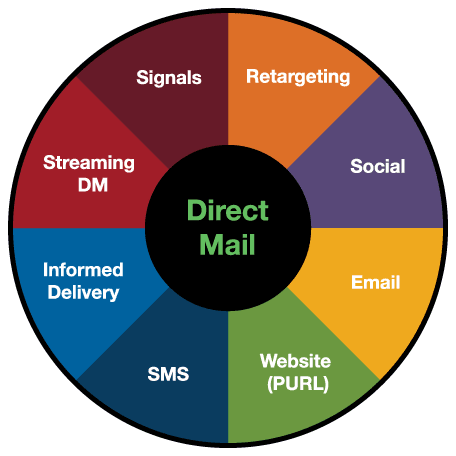
For example, pairing streaming ads with direct mail creates a 25-30% lift in response rate over direct mail alone. Likewise, adding direct mail to an existing email campaign, especially at strategic points in the buying funnel, adds between $1.26 and $4.06 of additional profit per piece over just email alone! (Where in that range results fall depends on whether the campaign effort is for customer acquisition, re-activation, or retention.)
Deliver a powerful story with direct mail design
When executed successfully, the result is increased brand awareness, new customer growth, and greater customer retention.
Define your story and its manifestation
Brand stories are compelling and authentic, and never an overt sales pitch. They are not about touting the features and benefits of your offerings, but about communicating emotions, experiences, and needs in relationship to what your brand evokes.
Perigold’s spring direct mail design did an amazing job at eliciting emotion, especially since recipients had been in lock-down for some time at the point of receiving it. For us in the upper Midwest, after a long winter, this was a double emotional effect. I kept picking up this piece and staring at it with both joy and longing. Here’s a zoom in on the front cover, followed by the full reader experience:

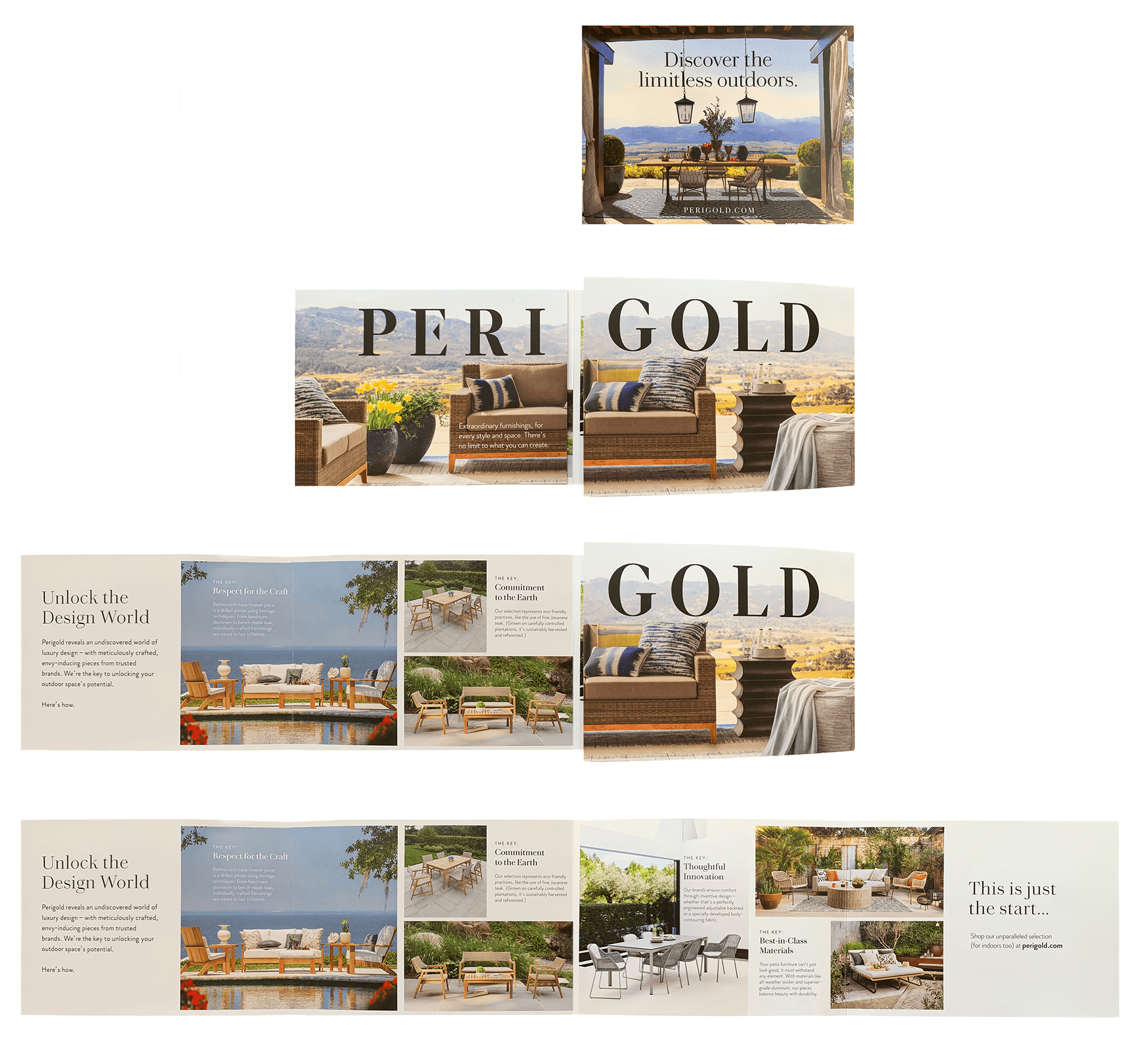
Perhaps most importantly, storytelling is never a one-off occurrence, but ongoing with each element threaded together by a cohesive narrative.
Choose two primary channels to test
Just as important as creating a cohesive narrative is determining how the elements of your story will be delivered. As consumers, we don’t solely use one communication channel. We move seamlessly from channel to channel back and forth many times throughout our day. This means that, as marketers, we can’t rely on one channel to tell our stories.
There’s no question that our communications are, and will continue to be, driven by digital channels. However, for as much as we gravitate to digital channels first, the power of print, especially direct mail, is too great for smart marketers to ignore when it comes to brand storytelling.
Put it to paper
The real estate a direct mail design provides enables brands to go deeper into their story, highlighting more than just the offer. Use the space to let consumers know what you stand for, what your brand represents, and how your employees are treated. The latter is especially important in today’s climate where consumers are putting more value on brands that treat their employees well during the pandemic.
Walter E. Smithe recently chose to take up most of their direct mail real estate by showing relatable and emotion-grabbing images of families using their furniture. The front cover below allows WES to showcase their branding, an offer, family members, and their furniture and decor without appearing too busy. Instead, it feels like a breath of fresh air. The story is of happy families in organized, beautiful, modern homes, and furniture so easy to clean that your dog can roam the stark white fabric.
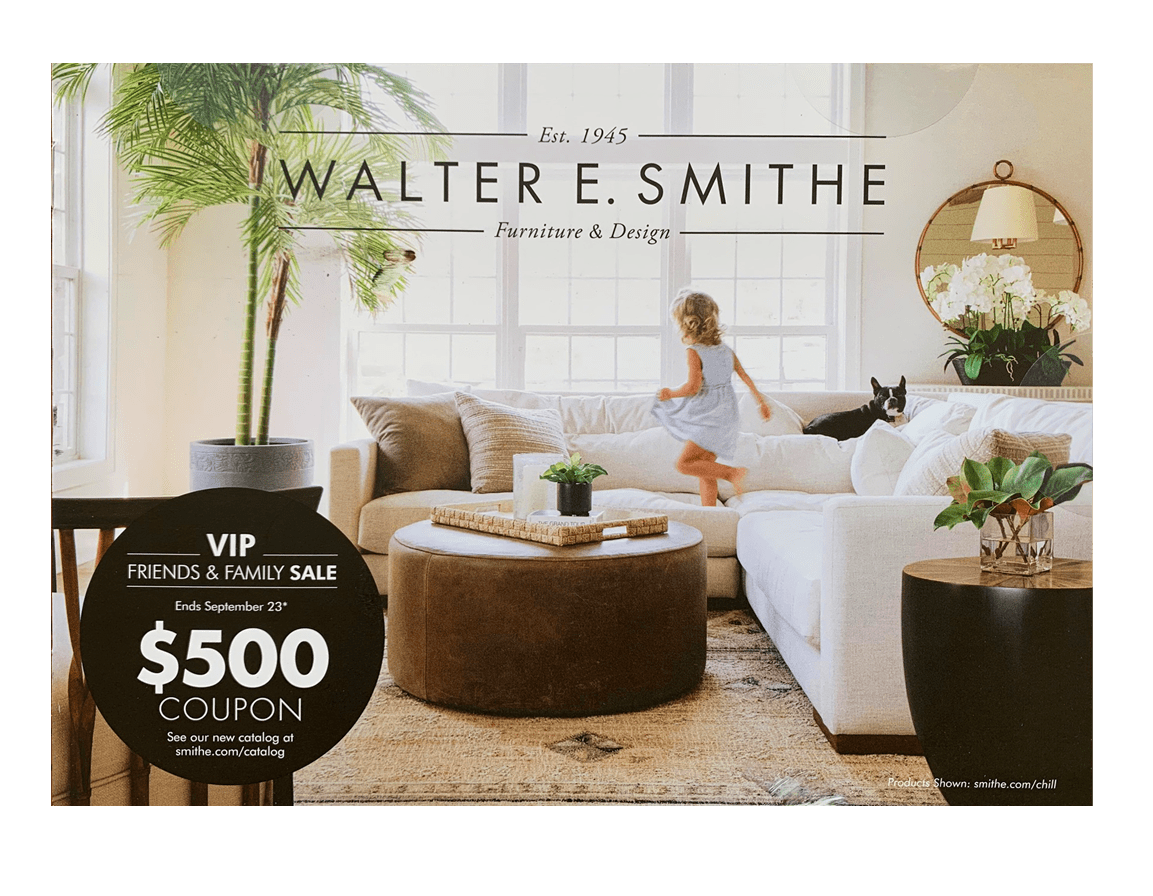
The format opens to reveal more elements of the family story, with different family members experiencing life on the furniture. On one inside panel, the image is about the feelings the furniture enables, as WES chose a smaller area to show the sofa unobstructed plus configuration options. Even more emotional, their copy connects to the feelings the image elicits, and memories of the holidays:
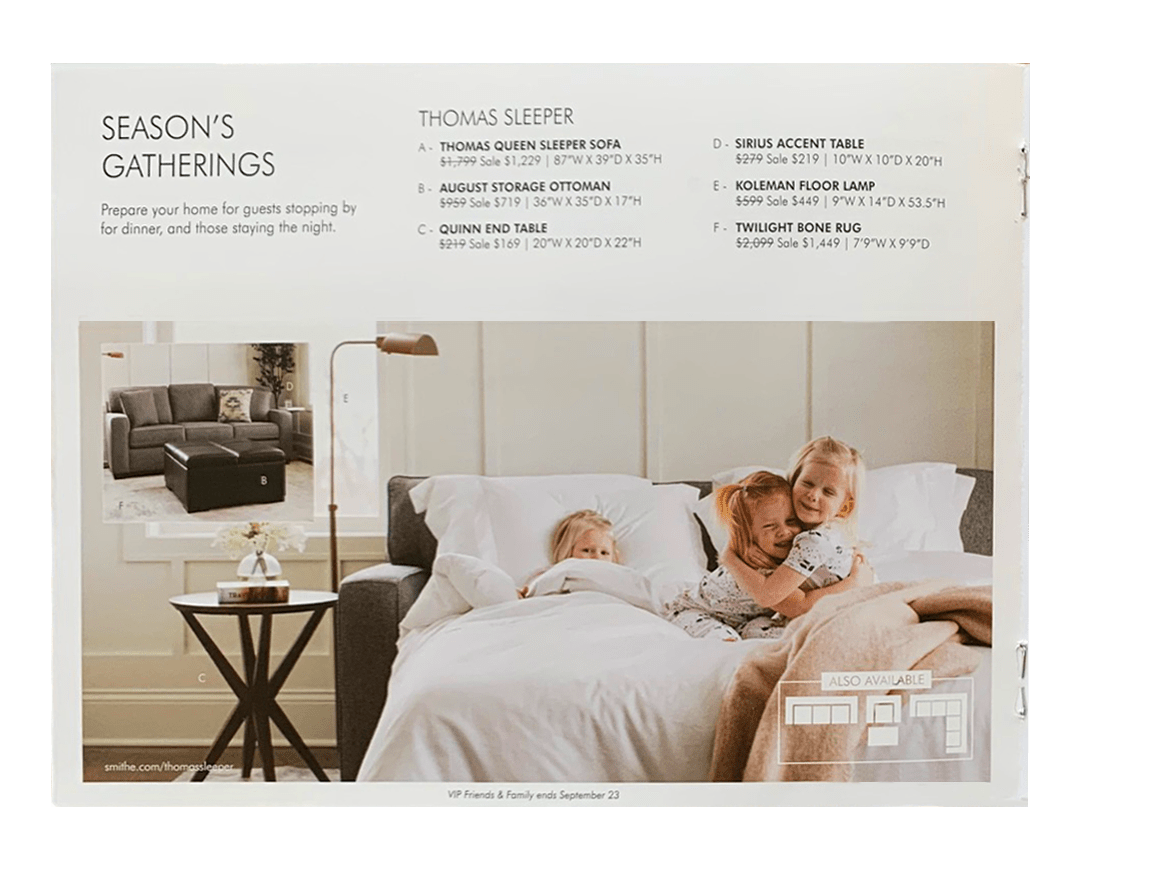
Last but not least, the back cover design details their offer and financing. While it isn’t showcasing regular employees, the message sticks with the story across all of WES’ recent marketing communications, of the united, proud, and relatable ownership family.
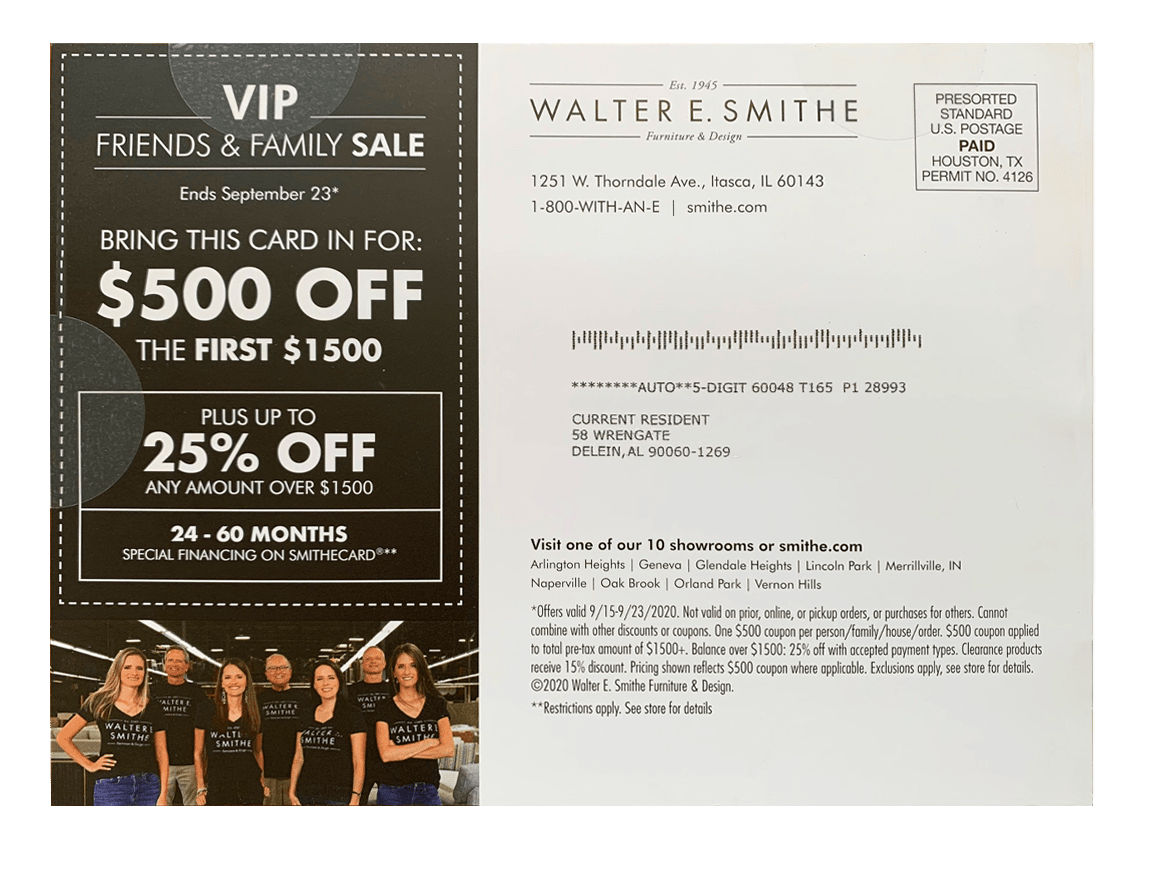
For brands, the very reason your business exists, why you developed your products and services, and what need you’re trying to fulfill is the backbone of your story. Conveying this narrative humanizes your brand and provides a roadmap for all the elements of your brand story, from your tagline to your customer service greeting.
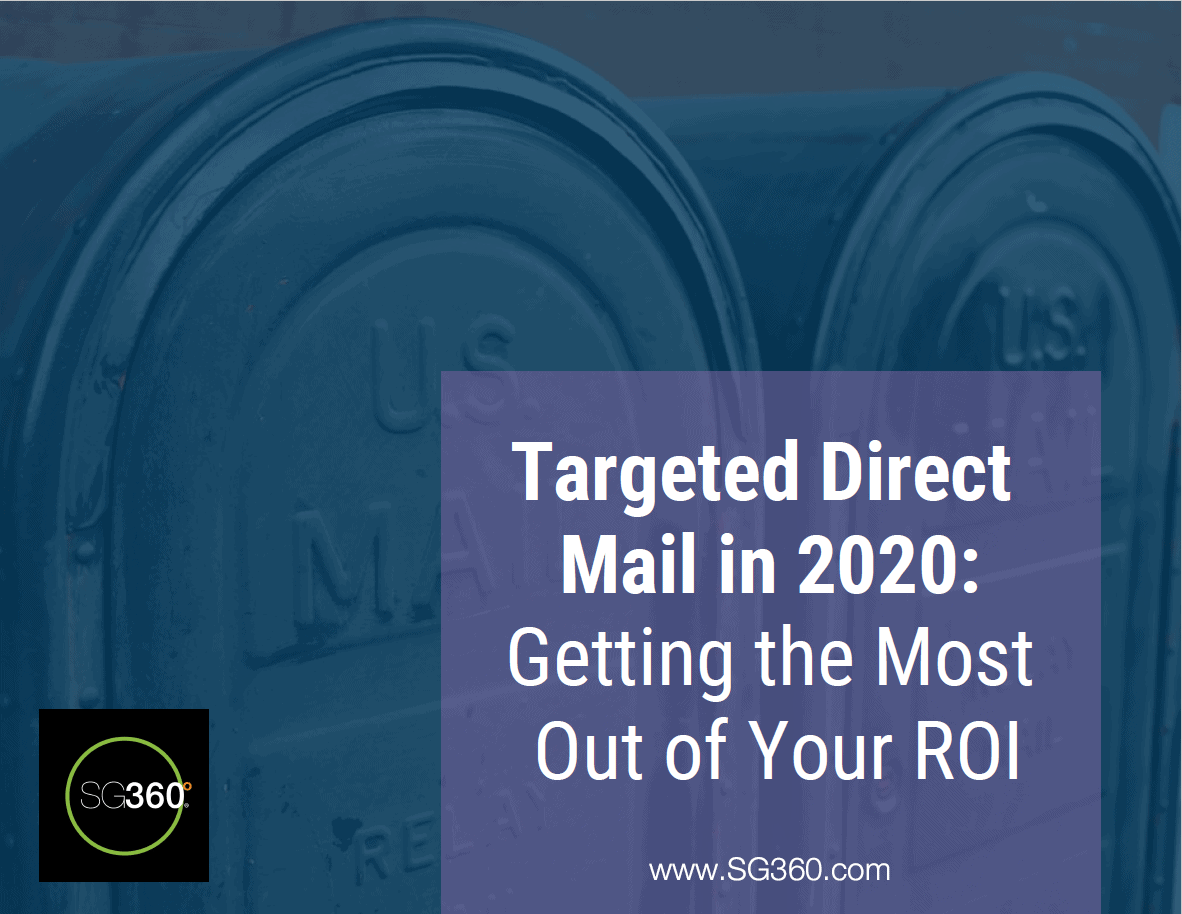 Direct mail, with its multitude of formats ranging from a quick-hitting postcard to a 16-page self-mailer booklet to a multi-insert letter and envelope, is one of the most compelling channels for telling your brand story with depth, feeling, and completeness. For the most cost-efficient and effective formats by industry and quantity, download our eBook Targeted Direct Mail in 2020: Getting the Most Out of Your ROI.
Direct mail, with its multitude of formats ranging from a quick-hitting postcard to a 16-page self-mailer booklet to a multi-insert letter and envelope, is one of the most compelling channels for telling your brand story with depth, feeling, and completeness. For the most cost-efficient and effective formats by industry and quantity, download our eBook Targeted Direct Mail in 2020: Getting the Most Out of Your ROI.
Want to learn more about furthering your brand’s story with direct mail? Reach out to our solutions experts.

